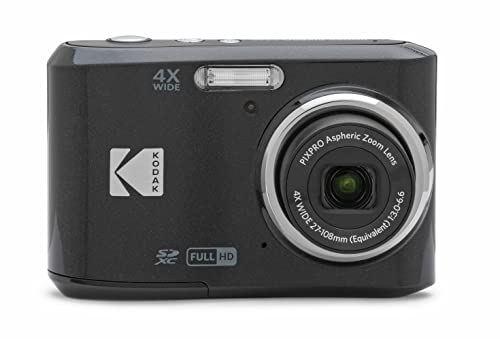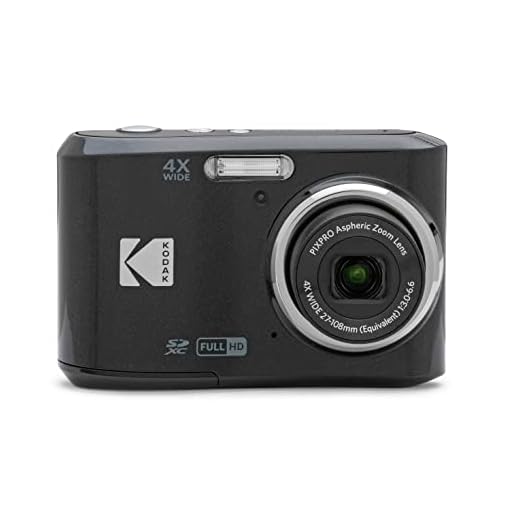




The digital camera has revolutionized the way we capture and share memories, but have you ever wondered how it all began?
The first digital camera was invented by Steven Sasson, an engineer at Eastman Kodak, in 1975. It was a far cry from the compact and sleek devices we use today, weighing in at a hefty 8 pounds and capturing black and white images at a resolution of 0.01 megapixels.
Sasson’s invention marked the beginning of a new era in photography, paving the way for the digital revolution that would eventually render film cameras obsolete.
The Invention of the Digital Camera
The digital camera was invented by Steven Sasson, an engineer at Eastman Kodak Company, in 1975. Sasson’s invention marked a significant milestone in the history of photography, as it revolutionized the way images were captured, stored, and shared.
Key Components:
Sasson’s digital camera prototype consisted of a CCD image sensor, an analog-to-digital converter, and a digital cassette tape for storage. The camera captured black-and-white images at a resolution of 0.01 megapixels, which was a far cry from today’s high-resolution cameras but groundbreaking at the time.
Impact and Legacy:
Despite initial skepticism from Kodak’s management, the digital camera eventually paved the way for the widespread adoption of digital photography. Today, digital cameras are ubiquitous, and film cameras have become a relic of the past. Sasson’s invention laid the foundation for the digital imaging revolution that continues to shape the way we capture and share memories.
| Year: | Inventor: | Company: |
|---|---|---|
| 1975 | Steven Sasson | Eastman Kodak Company |
Early Innovations in Photography
Photography has a rich history of innovation, with early pioneers laying the groundwork for the development of the digital camera. One such innovation was the creation of the first permanent photograph by Joseph Nicéphore Niépce in 1826. This marked the beginning of a new era in visual documentation.
Development of Daguerreotype
In 1839, Louis Daguerre introduced the daguerreotype process, which revolutionized photography by creating detailed and sharp images on silver-plated copper sheets. This method set the stage for further advancements in photographic technology.
Invention of the First Digital Camera
Fast forward to 1975, when Steven Sasson, an engineer at Kodak, invented the first digital camera. This groundbreaking invention paved the way for the digital revolution in photography, leading to the sophisticated cameras we use today.
Shift to Digital Technology
As technology advanced, the shift towards digital photography became inevitable. The first digital camera was created in 1975 by engineer Steven Sasson at Eastman Kodak. This groundbreaking invention marked the beginning of a new era in photography.
Advantages of digital technology:
- Instant results: Digital cameras allow photographers to view and edit images instantly, eliminating the need for film processing.
- Cost-effective: Digital photography reduces the cost of film and printing, making it more accessible to a wider audience.
- Convenience: Digital cameras are compact and lightweight, making them easy to carry and use on the go.
Overall, the shift to digital technology revolutionized the photography industry, paving the way for new creative possibilities and innovations.
The Birth of the Digital Camera
The first digital camera was invented by Steven Sasson, an engineer at Eastman Kodak, in 1975. Sasson’s invention marked the beginning of a new era in photography, transitioning from traditional film-based cameras to digital technology.
Sasson’s digital camera weighed about 8 pounds and was the size of a toaster. It had a resolution of 0.01 megapixels and captured black and white images onto a cassette tape. Despite its limitations, this prototype paved the way for future advancements in digital photography.
Over the years, digital cameras evolved rapidly, becoming more compact, affordable, and capable of capturing high-quality images. Today, digital cameras are ubiquitous, revolutionizing the way we capture and share moments in our lives.
Development of the CCD Sensor
The development of the Charge-Coupled Device (CCD) sensor was a crucial step in the creation of the first digital camera. The CCD sensor was invented by Willard Boyle and George E. Smith in 1969 while working at Bell Labs. This sensor revolutionized the way images were captured and stored, as it converted light into electronic signals.
The CCD sensor consists of an array of light-sensitive diodes that convert photons into electrons. These electrons are then transferred and stored in a sequential manner, allowing for the creation of a digital image. The CCD sensor provided higher resolution and better image quality compared to traditional analog cameras, making it a key component in the development of digital photography.
Thanks to the CCD sensor, digital cameras were able to capture images in a more efficient and convenient way, paving the way for the digital photography revolution that we see today.
Commercialization of Digital Cameras
The commercialization of digital cameras began in the late 1980s and early 1990s with the introduction of consumer-friendly models. Companies like Sony, Canon, and Kodak played a significant role in popularizing digital photography.
Key Developments
One of the key developments in the commercialization of digital cameras was the release of the Kodak DC40 in 1995, which was the first digital camera to be aimed at consumers. This camera had a resolution of 756 x 504 pixels and could store up to 48 images on its internal memory.
Market Expansion
As technology improved and prices decreased, digital cameras became more accessible to the general public. The market expanded rapidly, and by the early 2000s, film cameras were largely replaced by digital cameras in the consumer market.
| Year | Key Event |
|---|---|
| 1986 | Sony introduces the first commercial digital camera, the Mavica. |
| 1990 | Canon releases the first digital camera to use a CompactFlash memory card. |
| 1994 | Apple QuickTake 100 is launched, one of the first consumer digital cameras. |
Impact on Photography Industry
The invention of the first digital camera revolutionized the photography industry in numerous ways. Here are some key impacts:
1. Accessibility
- Digital cameras made photography more accessible to the general public. With the ability to instantly view and delete photos, people could experiment and learn without the cost of film and developing.
- Photography became a more democratic art form, as anyone with a digital camera could capture and share moments without the need for specialized equipment.
2. Innovation and Advancements
- The introduction of digital technology led to rapid advancements in camera capabilities. Features like high-resolution sensors, autofocus systems, and image stabilization became standard in digital cameras.
- Photographers could now easily manipulate and enhance their images using editing software, opening up new creative possibilities.
Overall, the first digital camera transformed the photography industry by democratizing the art form, driving innovation, and expanding creative possibilities for photographers of all levels.
Evolution of Digital Camera Technology
Over the years, digital camera technology has evolved significantly, revolutionizing the way we capture and store images. Here is a brief overview of the key milestones in the evolution of digital cameras:
| Year | Key Development |
| 1975 | The first digital camera prototype was created by Kodak engineer Steven Sasson. It weighed 8 pounds and had a resolution of 0.01 megapixels. |
| 1986 | Fujifilm released the first commercial digital camera, the DS-1P, which used a removable memory card for image storage. |
| 1990 | The Dycam Model 1 was the first consumer digital camera to be sold in the United States, offering a resolution of 320×240 pixels. |
| 1991 | Nikon introduced the first digital single-lens reflex (DSLR) camera, the Nikon QV-1000C, which featured a 1.3-megapixel sensor. |
| 1995 | Canon released the EOS DCS 3, the first digital camera to feature a full-frame 35mm sensor, setting a new standard for image quality. |
| 2000 | The first camera phone, the Sharp J-SH04, was introduced in Japan, combining digital camera technology with mobile communication. |
| 2010 | Sony launched the Alpha NEX-5, the first mirrorless interchangeable lens camera, offering DSLR-like performance in a compact body. |
| 2020 | Digital camera technology continues to advance rapidly, with high-resolution sensors, advanced image processing, and innovative features enhancing the photography experience. |
Modern Features and Advancements
Over the years, digital cameras have evolved significantly, incorporating cutting-edge technology and innovative features. Some of the modern features and advancements in digital cameras include:
- High Megapixel Count: Digital cameras now offer high megapixel counts, allowing for detailed and sharp images.
- Advanced Image Sensors: Improved image sensors capture light more effectively, resulting in better image quality, especially in low-light conditions.
- Wireless Connectivity: Many digital cameras now come equipped with Wi-Fi or Bluetooth connectivity, enabling users to easily transfer photos to their devices or share them online.
- Touchscreen Displays: Some digital cameras feature touchscreen displays for intuitive navigation and control.
- Video Recording: Most digital cameras can now record high-quality videos in addition to capturing still images.
- Image Stabilization: Built-in image stabilization technology helps reduce blur caused by camera shake, resulting in sharper images.
- Face Detection and Autofocus: Digital cameras often include face detection and autofocus features to ensure that subjects are in focus and properly exposed.
These advancements have revolutionized the photography industry, making digital cameras more versatile and user-friendly than ever before.
Future of Digital Imaging
As technology continues to evolve at a rapid pace, the future of digital imaging is set to be an exciting journey. With advancements in artificial intelligence, machine learning, and computational photography, we can expect digital cameras to become even more intelligent and capable.
One of the key trends in digital imaging is the integration of AI algorithms into cameras, allowing them to automatically optimize settings based on the scene being captured. This will result in better image quality and more accurate color reproduction, making it easier for users to take stunning photos without needing to adjust manual settings.
Enhanced Connectivity
Another aspect of the future of digital imaging is enhanced connectivity. Cameras will likely come equipped with advanced wireless capabilities, allowing for seamless sharing of images and videos across various devices and platforms. This will enable photographers to instantly upload their work to social media or cloud storage, making it easier to showcase their creativity and reach a wider audience.
Revolution in Image Processing
Furthermore, we can expect a revolution in image processing techniques, with cameras becoming more adept at capturing high dynamic range (HDR) images, reducing noise in low-light conditions, and enhancing details in challenging lighting situations. With the continued development of computational photography, digital cameras will be able to produce images that rival those of professional DSLRs, all in a compact and portable form factor.
| Key Features of the Future | Benefits |
|---|---|
| AI-powered optimization | Improved image quality and color reproduction |
| Enhanced connectivity | Seamless sharing and instant uploads |
| Advanced image processing | High-quality images in challenging conditions |
FAQ
Who invented the first digital camera?
The first digital camera was invented by Steven Sasson, an engineer at Eastman Kodak, in 1975.
How does a digital camera work?
A digital camera works by capturing light through a lens, converting it into electronic signals, and then storing those signals as digital data on a memory card.
What was the resolution of the first digital camera?
The first digital camera invented by Steven Sasson had a resolution of 0.01 megapixels, which is extremely low compared to modern digital cameras.







